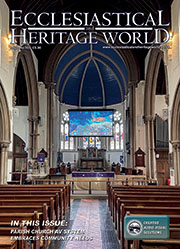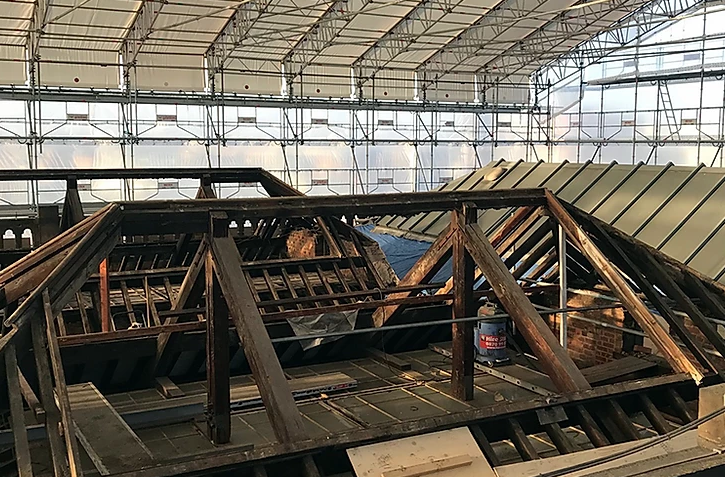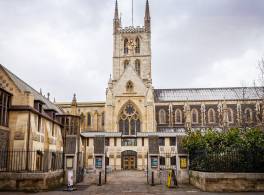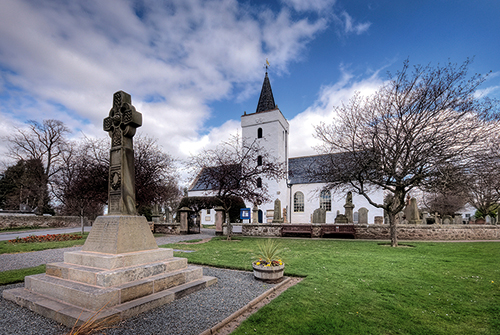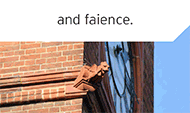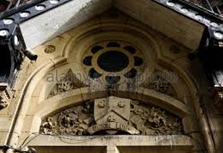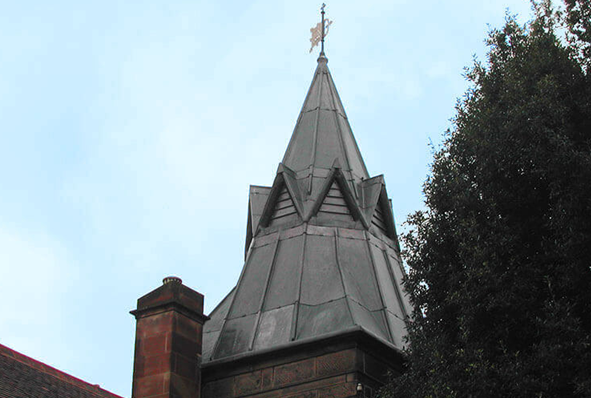Heritage Roofing
Heritage roofing - maintaining our iconic buildings
The UK is home to some of the most iconic buildings in the world, from stunning churches and cathedrals to historic stately homes. Each and every one of these remarkable feats of architecture requires regular maintenance to ensure they remain in the very best condition, allowing them to be enjoyed for generations.
Cathedral Care
Restoration and upkeep of cathedrals
There are some 42 Anglican cathedrals in the UK, not to mention 20 or so Catholic cathedrals. Cathedrals form the most important collection of historic buildings in England. The largest and most ancient are internationally famous, the smallest are usually among the most significant buildings in their region and even the most recent are architectural masterpieces.
Master Craftsmen
Championing our heritage with modern craftsmanship
Twenty years ago, English Heritage (now Historic England) published its first-ever Register of Buildings at Risk across England, which featured nearly 2,000 buildings and monuments that were ‘neglected, broken and unloved’. Recently Historic England was delighted to announce that over two-thirds of those buildings were now safe, in both urban and rural areas right across the country.
Lightning Protection
When lightning strikes are you protected against this act of God?
The issue of lightning protection in churches is one that has exercised this publication for many years. In this four-part series of spotlights on the issue we will be revisiting various aspects of the subject, beginning with an overview of current thinking.
Traditional Lime
Lime: it’s better for buildings – and for the environment
It is now fairly well known that cement is not good for old buildings and that lime mortar should be used. But why? What are the advantages and what are the disadvantages? In order to begin to answer those questions it is necessary to understand the nature of traditional building, the process by which buildings used to be built, and how it differs from modern construction, the process by which we build today.
Audio Visual
Audio visual equipment in church buildings
This guidance is issued by the Church Buildings Council under section 55(1)(d) of the Dioceses, Mission and Pastoral Measure 2007. As it is statutory guidance, it must be considered with great care. The standards of good practice set out in the guidance should not be departed from unless the departure is justified by reasons that are spelled out clearly, logically and convincingly.
Read More...
LPOW Grants
£23 million government package to support restoration of thousands of listed places of worship
Heritage Minister Sir Chris Bryant has announced that the Listed Places of Worship Grant Scheme will be extended into the next financial year, providing £23 million so that thousands of historical buildings, including churches, synagogues, mosques and temples, can carry out restoration work.
CRE Events
Exhibitors enthuse over the CRE experience
By 4pm on the first day of CRE 24 at the Marshall Arena in Milton Keynes, exhibitors Chris and Kim Dunphy had already had so many helpful and detailed conversations with visitors that they were “completely talked out”.
Insurance
You need to ensure that reasonable precautions are in place at your church to keep it safe for those who use it. To do this, you need to think about what might cause harm to people.
You will then need to decide if the precautions already in place are adequate. If they are not, you may need to identify further action to prevent any danger. When done formally, this is known as a risk assessment.
Church Maintenance
Church maintenance and repair: Calendar of Care
Just as prevention is always better than cure, maintenance is preferable to major repairs. But, such repairs may not always be avoidable. Church Care offers a monthly guide in our coming issues Starting in Spring
We can help you understand the common problems and areas that need your special attention, and give you tips for regular maintenance schemes.
Pest Control
Michael Palin warns of pest threat to churches
Michael Palin is supporting the future of the UK’s historic churches and chapels with a voiceover for a new animated film. The 80 second animation, produced for the National Churches Trust, highlights why churches are some of the nation’s best loved buildings.
Town Halls
The history of the great Victorian Town Halls of Northern England
From industrial squalor to civic pride, the story behind some of the most impressive buildings of the North involve a unique mix of economics, grand designs and noble sentiments within communities.
Lead Roofing
Lead is one of the oldest materials in the roofing industry and is still commonly used throughout the world today.
Lead roofing is a traditional roofing method which has been used in the industry for hundreds of years, and is therefore proven to be extremely reliable. Lead roofing, and sand-cast lead, in particular is ideal for old buildings such as churches or historical renovations, whereas milled lead roofing is a mass-produced alternative, used for precision and accuracy in homes and commercial buildings alike.
SEARCH OUR DIRECTORY
The development of the Heritage Crime Programme in England
 Mark Harrison, Head of Heritage Crime Strategy at Historic England, outlines the development of their Heritage Crime Programme.
Mark Harrison, Head of Heritage Crime Strategy at Historic England, outlines the development of their Heritage Crime Programme.
Historic England defines heritage crime as: "Any offence which harms the value of England's heritage assets and their settings to this and future generations."
Harm caused to a heritage asset by crime or anti-social behaviour will often have both direct and indirect impacts. For example, the loss of historic fabric from a listed building through theft or vandalism will not only have a direct impact by damaging the fabric of the building itself. It can also have an indirect impact such as social or economic loss to the amenity of an area.
The problem of crime and anti-social behaviour relating to historic buildings, archaeological sites (both maritime and terrestrial) and cultural property is not a modern phenomenon. Occurrences have been documented and recorded for hundreds, if not thousands of years.
From the looting of Egyptian tombs in antiquity; to contemporary issues leading to the loss and destruction of historic sites and buildings. Crimes include metal theft, unauthorised development, unlawful salvage and the impact of armed conflict and terrorism. What's new is the sheer scale and extent of the criminality.
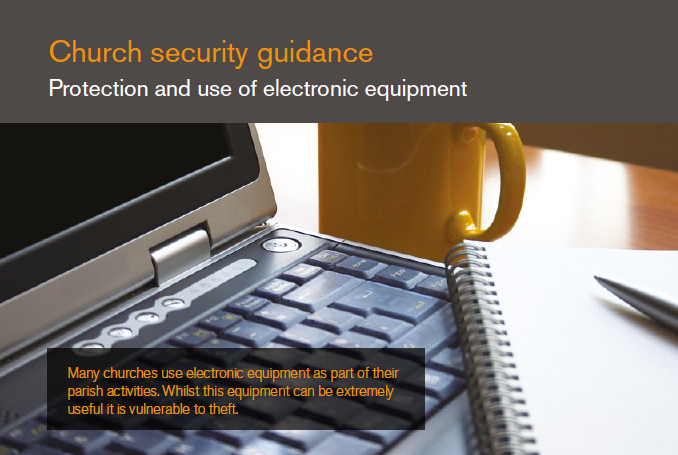
Many churches use computer equipment of some type. These are generally portable, saleable and therefore very attractive to thieves.
Church computers are commonly either kept in the church/parish office, at the parsonage or at the home of another church official. Many churches use portable projectors and sophisticated sound systems.
These items, like computers, are most attractive to thieves. Ecclesiastical offers some advice on the security measures to be taken.
Click here for the full story
In 2010, the Conference of the Parties to the United Nations Convention on Transnational Organized Crime stated that: "Where ancient artefacts are stolen and the sites in which they were hidden are destroyed through looting, archaeologists are unable to gather knowledge about the past."
The conference further identified the trafficking in cultural property as one of the "new and emerging crimes of concern. The emergence of these new crime types gives rise to the need for law enforcement response to adapt its efforts and capacities accordingly."
For more than 100 years, legislators have recognised the need to protect England's irreplaceable stock of historic sites and buildings. There's been a succession of statutory measures, with more recently shipwrecks, military remains and cultural objects receiving protection. This has included the introduction of specific offences to counter the threats of theft, damage and unauthorised works or alteration.
The challenge set for the authorities charged with the protection of the nation's heritage has always been very clear: to ensure that the historic and cultural environment is passed to the next generation in as good a condition as we found it, or even in a better condition. This also provides a definition of preservation and sustainability. But in reality, the division of responsibility between heritage protection bodies, local planning authorities and law enforcement agencies was not clearly described or coordinated.
The situation was exacerbated by the perceived rarity of incidents and the lack of knowledge and understanding relating to the nature of the loss and limited expertise within the law enforcement and heritage sectors. This meant that the task was not being fulfilled to best effect.
In 2011, Historic England (formerly English Heritage) in collaboration with the National Police Chiefs' Council (formerly the Association of Chief Police Officers) and the Crown Prosecution Service recognised the need for a more structured and sustainable approach to the prevention and investigation of crime and anti-social behaviour within the historic environment of England.
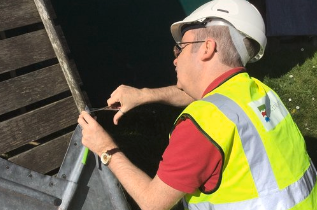 This was a significant development and highlighted the level of concern and commitment across the heritage and law enforcement sectors to address the issues. The partnership is now known as the National Heritage and Cultural Property Crime Working Group and is chaired by the National Police Lead for Heritage and Cultural Property Crime.
This was a significant development and highlighted the level of concern and commitment across the heritage and law enforcement sectors to address the issues. The partnership is now known as the National Heritage and Cultural Property Crime Working Group and is chaired by the National Police Lead for Heritage and Cultural Property Crime.
In 2012, Historic England (then known as English Heritage) funded research into the extent of heritage crime. It indicated that in the previous 12 months, "18.7% of all listed buildings were physically affected by criminal activity". The finding equates to over 70,000 listed buildings! For almost 30,000 listed buildings, the impact was classified as 'substantial'.
 More generally, around 20% of listed buildings are harmed by crime every year. This figure is almost double for listed places of worship. The biggest single threat identified by the research was metal theft, in particular from church buildings with over 14% of buildings being affected.
More generally, around 20% of listed buildings are harmed by crime every year. This figure is almost double for listed places of worship. The biggest single threat identified by the research was metal theft, in particular from church buildings with over 14% of buildings being affected.
Since 2012, the working group has made significant progress and stimulated an awareness of the existence of and the significance of protected heritage assets at a national, regional and local level. The partnership has provided law enforcement agencies, heritage practitioners and local communities with the advice, training and expertise they need to protect the historic environment from the impact of crime and anti-social behaviour.
A majority of police services have identified officers to act as single points of contact for matters relating to heritage and cultural property crime. The function is often aligned to the investigation of offences within the rural and natural environment. This network of specialist officers, police staff and support volunteers is helping to provide an effective and efficient response to heritage crime and has been supported by the publication of the Heritage Crime: A Guide for Law Enforcement Officers. In January 2018, Historic England commissioned the first heritage crime textbook which is anticipated to be published in the summer of 2019.
 In parallel, the Crown Prosecution Service has identified specialist prosecutors to act as Heritage and Wildlife Crime Coordinators.
In parallel, the Crown Prosecution Service has identified specialist prosecutors to act as Heritage and Wildlife Crime Coordinators.
An increasing number of community safety partnerships, Local and National Park Authorities have added their signatures to the associated Memorandum of Understanding, and many others have highlighted their intention to engage in the process.
Our knowledge and understanding of the threats posed to heritage sites, buildings and cultural property continues to improve through the provision of a bi-annual strategic threat assessment.
The current assessment, published in July 2017, identifies seven types of crime and anti-social behaviour as the most prevalent:
- Architectural theft - in particular the theft of metal and stone
- Criminal damage - vandalism, graffiti and in particular damage caused by fire
- Unlawful metal detecting - sometimes referred to as 'nighthawking'
- Unlawful disturbance and salvage of historic maritime sites
- Anti-social behaviour - in particular fly-tipping and off-road driving/riding
- Unauthorised works to a listed building or scheduled monument
- Illicit trade in cultural objects
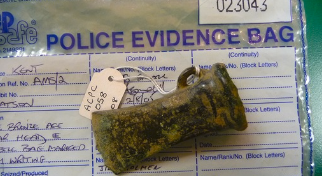 As a result of the assessment's findings the working group has launched a series of national campaigns designed to target specific heritage crime threats. These include:
As a result of the assessment's findings the working group has launched a series of national campaigns designed to target specific heritage crime threats. These include:
- Operation Chronos - Unlawful metal detecting, sometimes referred to as 'nighthawking'
- Operation Crucible - Theft of metal from protected historic sites and buildings and,
- Operation Birdie - Unlawful interference and salvage from historic wreck sites.
Across the country local history and archaeological societies, sub-aqua and metal detecting clubs and Neighbourhood Watch groups (including Heritage Watch) have been encouraged to be more aware and vigilant to the threat of heritage crime. Within their local areas they report any suspicious activities to the police. Heritage Watch Schemes are now active in Kent, City of York, Hertfordshire, Essex and Cheshire.
Our understanding of the extent and scale of the problem will continue to develop. As the intelligence gathering and assessment process matures and adopts the full range of quantitative and qualitative research methodologies high-risk locations will be identified.
An increased level of understanding will allow the implementation of the appropriate preventative and enforcement activities to reduce heritage and cultural property crime. Where offences do occur, it will allow identification of those responsible and to bring them to justice.
In February 2016, the Sentencing Council published new sentencing guidelines for theft offences which now include the theft, handling and disposal of stolen heritage assets. Courts will now be able to take account of the special nature of heritage and cultural property when sentencing offenders.
The value of our built and cultural heritage cannot be judged in pounds and pence alone. The impact of theft from historic buildings and archaeological sites, including those situated in the maritime environment, has far-reaching consequences over and above the financial cost of what has been stolen.
 When thieves steal metal from a church roof or artefacts from a historic wreck or archaeological deposit, they are stealing from all of us and damaging something which is often irreplaceable. The new guidelines will help the courts identify all the relevant factors to include and consider when making their sentencing decisions in relation to heritage and cultural property crime.
When thieves steal metal from a church roof or artefacts from a historic wreck or archaeological deposit, they are stealing from all of us and damaging something which is often irreplaceable. The new guidelines will help the courts identify all the relevant factors to include and consider when making their sentencing decisions in relation to heritage and cultural property crime.
Significant progress has been made to enhance the response to the problem of heritage crime in England. Similar programmes have been developed to tackle the issue in Scotland, Wales and Northern Ireland. There is more that can be done and with the help of the community, volunteers and dedicated professionals we can ensure that our past is preserved and conserved for future generations.
All photos copyright Historic England
Heritage properties urged to take precautions as Blenheim Palace toilet theft trial continues
Specialist heritage insurer Ecclesiastical is reminding historical properties to take security precautions to protect valuable artworks as the trial of individuals accused of stealing a £2.8m gold toilet takes place.
The theft of the 18-carat gold fully functional toilet, titled ‘America’ and made by Italian artist Maurizio Cattelan, took place at Blenheim Palace in Oxfordshire in September 2019.
Click here to read the full story.

Why video surveillance on scaffolding matters
Churches are more than just places of worship: they often serve as community centres, historical landmarks and even home to valuable artwork and artifacts. When scaffolding is erected for maintenance or restoration projects, the vulnerable structures require an extra layer of security. That is where having a video surveillance system monitoring the scaffolding and the building becomes an important deterrent to crime.
Click here to read the full story.

Safeguarding sanctuary: how to control the cost of church security
Steve Holland, managing director of Somerset-based Ace Defence Ltd, has been installing church roof alarms for over 10 years. Here he offers some advice on reducing risk while keeping the costs in check.
Talking to a colleague from Ecclesiastical Insurance recently, I learned that metal theft claims have fallen dramatically in recent years.
Click here to read the full story.
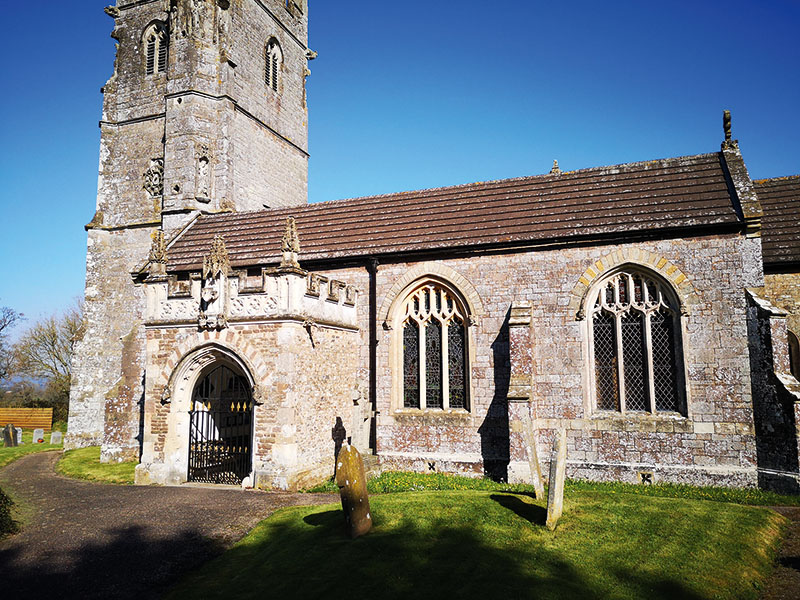
Britain’s heritage attractions suffer rise in graffiti, anti-social behaviour and verbal abuse, new research finds
New research commissioned by specialist heritage insurer Ecclesiastical has revealed heritage organisations are a prime target for vandals as a third (32%) were defaced by graffiti during the past 12 months, up 9% on the previous year.
The survey of 500 heritage decision makers found a third (32%) suffered anti-social behaviour, up 3%, and three in 10 (30%) reported experiencing verbal abuse towards staff and volunteers from visitors, up 4%.
Click here to read the full story.

Ecclesiastical urges heritage organisations to be vigilant following National Gallery Just Stop Oil attack
In response to Just Stop Oil activists smashing the glass cover of Diego Velazquez's The Rokeby Venus painting at the National Gallery, Ecclesiastical is urging heritage organisations to be vigilant.
Today, two Just Stop Oil activists were arrested on suspicion of criminal damage after they used safety hammers to smash the glass protecting The Rokeby Venus at the National Gallery in Central London.
Click here to read the full story.

These Aces help combat theft and vandalism at churches
Churches sit at the centre of many communities and theft of lead from the roof or vandalism to the fabric of the building or churchyard causes more than physical damage. The intrusion into the community – and the cost of remedying the resulting harm – can be costly. The cost of making repairs to a church roof can be high and may well have an adverse effect on the general maintenance budget, as well as increasing insurance premiums.
Click here to read the full story.
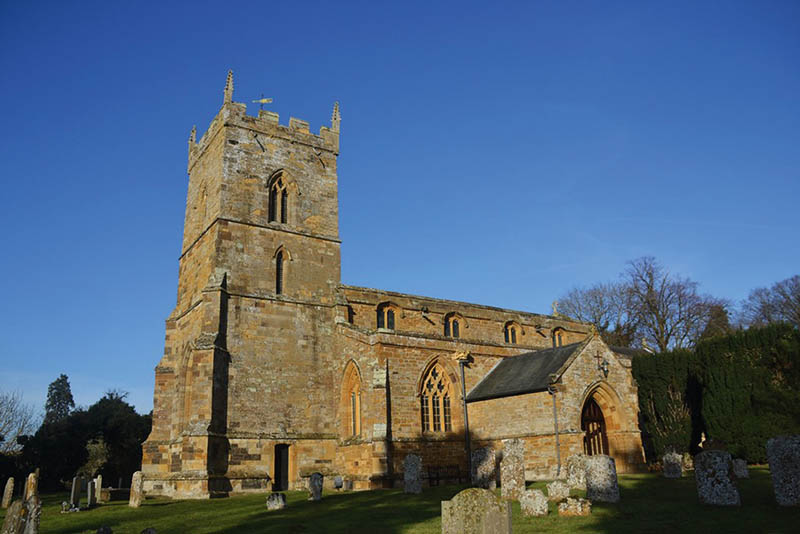
SafeSite Facilities can help to protect your site against fire
Fire poses a constant and significant risk on construction sites throughout the United Kingdom. This risk is amplified by activities like electrical work, soldering, and welding, often carried out amidst a wealth of flammable materials with limited escape options. This danger can be increased when adequate passive fire protection is lacking in new or modified buildings.
Click here to read the full story.

61% of heritage organisations lack awareness of forthcoming Martyn’s Law, new research finds
New research commissioned by specialist heritage insurer Ecclesiastical has revealed three in five (61%) heritage organisations lack awareness of Martyn’s Law, the forthcoming Protect Duty legislation.
In response to the Manchester Arena attack, Martyn’s Law, named after Martyn Hett, who was killed alongside 21 other victims, is designed to keep people safe by reducing the risk to the public from terrorist attacks at public venues.
Click here to read the full story.

Visitors behaving badly: 91% of heritage attractions suffer challenging behaviour during Covid-19
As many heritage attractions prepare to reopen on 17 May, research commissioned by specialist heritage insurer, Ecclesiastical, has revealed nine in 10 (91%) heritage attractions in the UK have experienced challenging behaviour from visitors since Covid-19.
Click here to read the full story.

Thieves increasingly targeting historic properties, warns specialist insurer
Historic properties are being urged to take steps to prevent being victims of crime following a spate of thefts from churches and stately homes.
According to data from Ecclesiastical’s claims team over £400,000 worth of claims have been made relating to the theft of stone since 2015. Since 2016 the figure has doubled pointing to a worrying increase.
Click here to read the full story.

How to secure your heritage building
Towards the end of 2016, following several years of steady decline, the price of metal, and in particular lead and copper, showed an upturn. This meant that protected heritage sites and buildings were placed at an increased risk of metal theft.
Click here to read the full story.
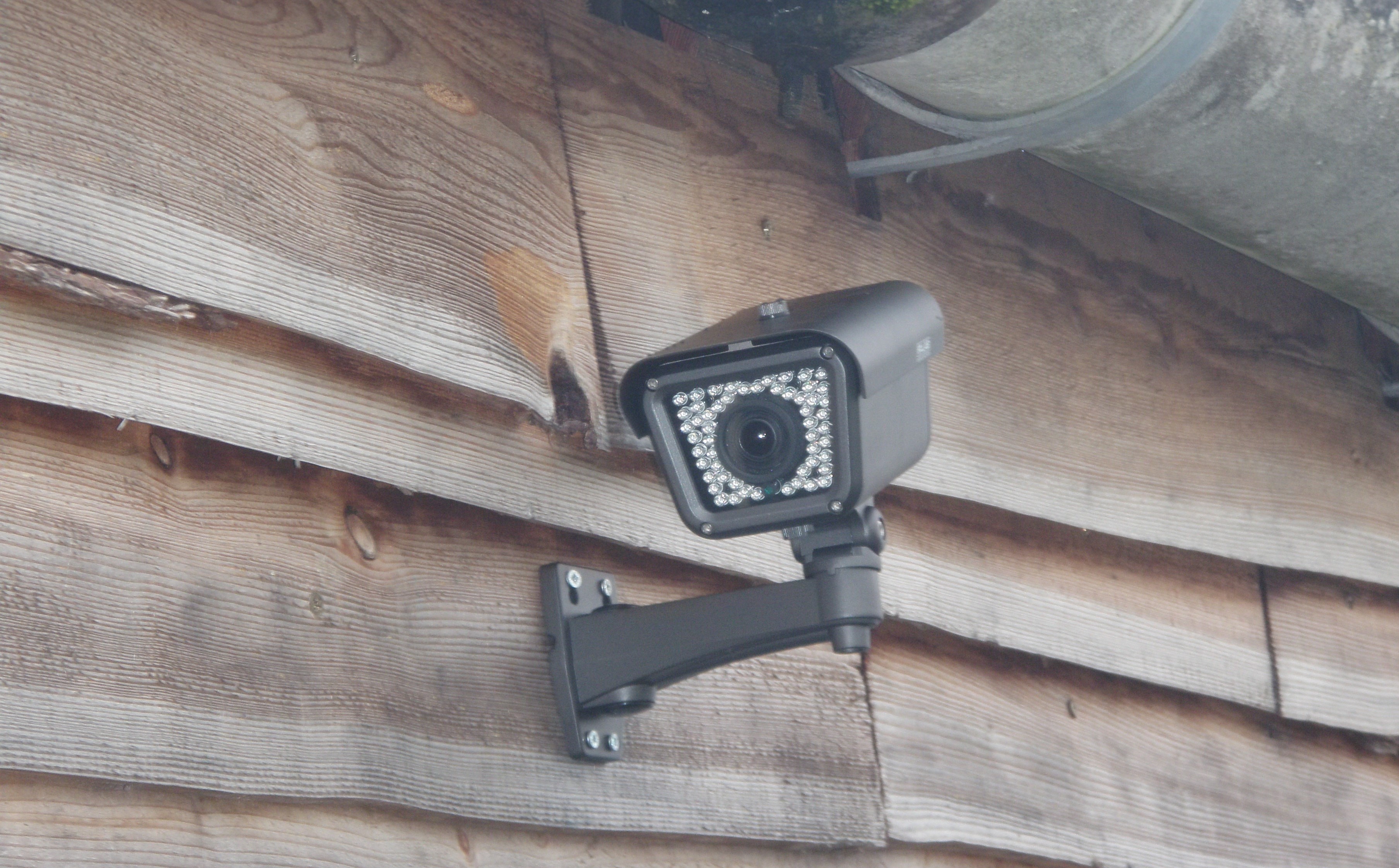
How to protect your listed property and deter thieves
Gaining consent to make alterations can be challenging if the measures proposed permanently alter the fabric of the building. There are many reversible and inconspicuous measures you can take to improve the security of your listed building which balance the needs of home owners and the authorities.
Click here to read the full story.

Ripley Castle revisited – testing the performance of a
Trace-in-Metal installation four and a half years on
Ripley Castle, the Grade I listed 14th century house near Harrogate in North Yorkshire, has been the hotspot for historically significant events and to this was added the first installation of the Trace-in-Metal marking system in April 2014.
Click here to read the full story.

Metal theft is costing the UK £770m a year
An estimated 18.7% of all listed buildings were physically affected by crime in 2017 - that is over 70,000 listed buildings. The biggest single threat is metal theft and the most threatened type of building is a church. Around 3 in 8 churches or other religious buildings were damaged by crime last year. Panthera Security is the UK’s first ever NACOSS Gold Accredited installer of NCP115 Compliant scaffold alarms and they are specialists in the installation of alarm and CCTV systems to listed and religious buildings whilst repair works are being carried out.
Click here to read the full story.











